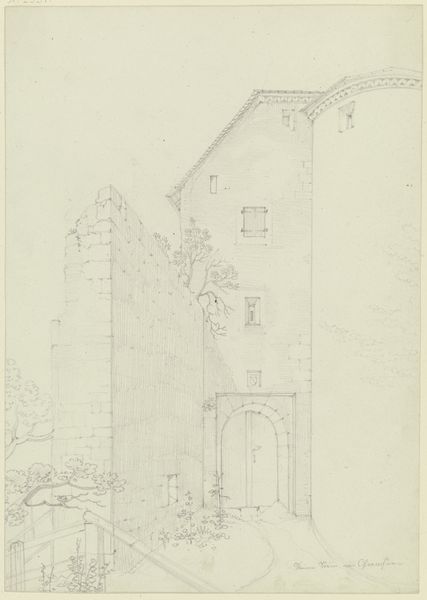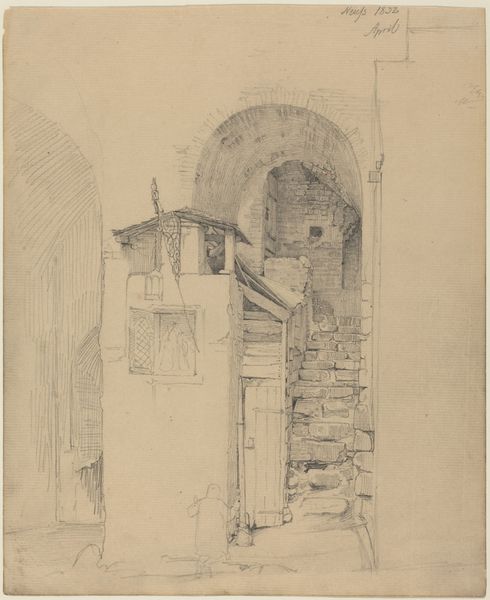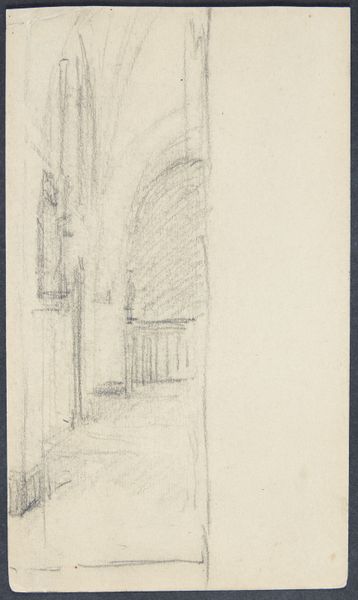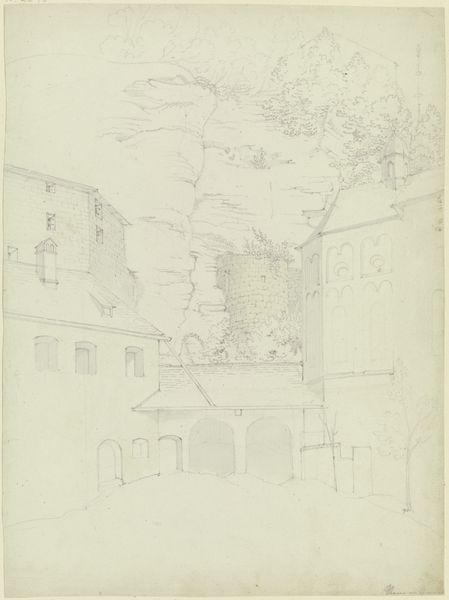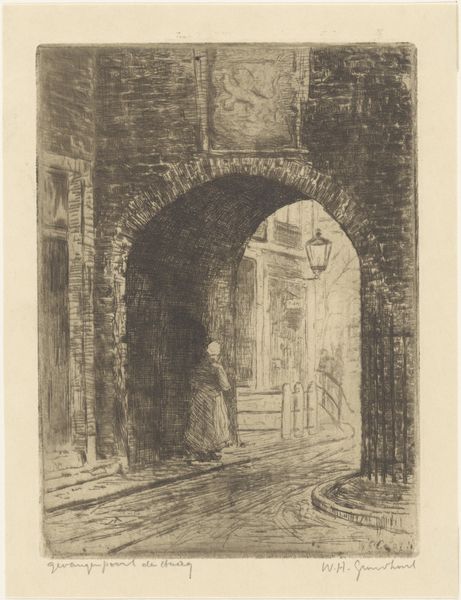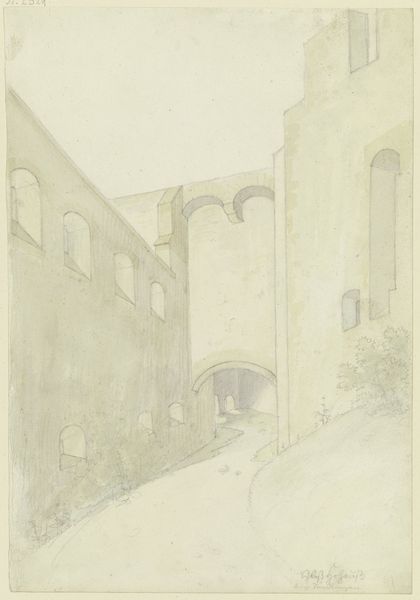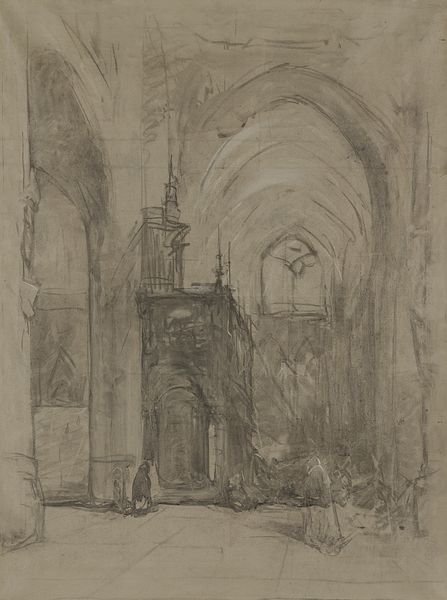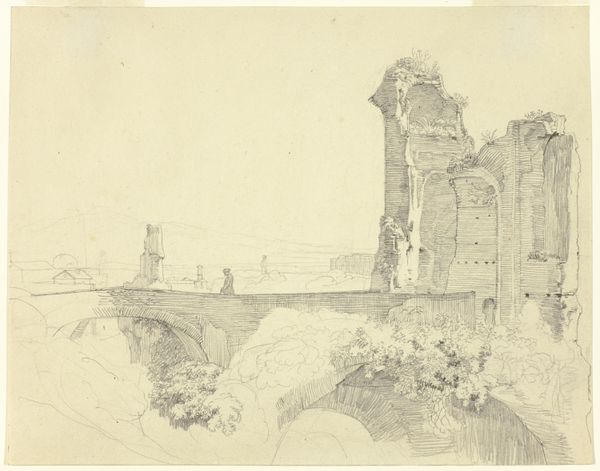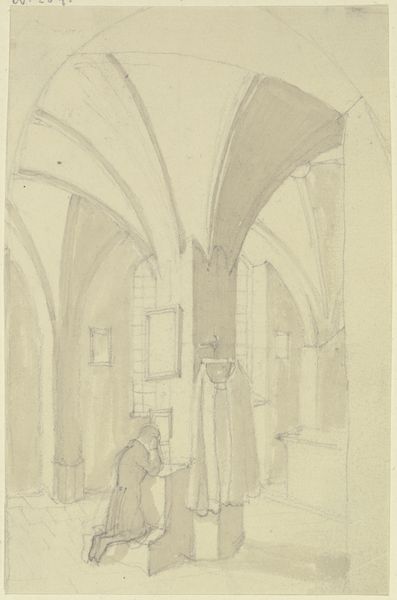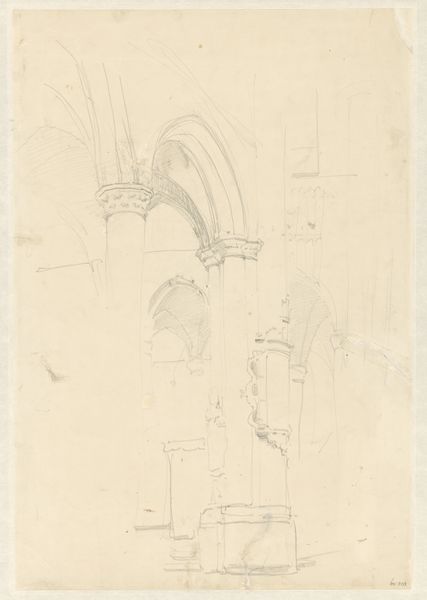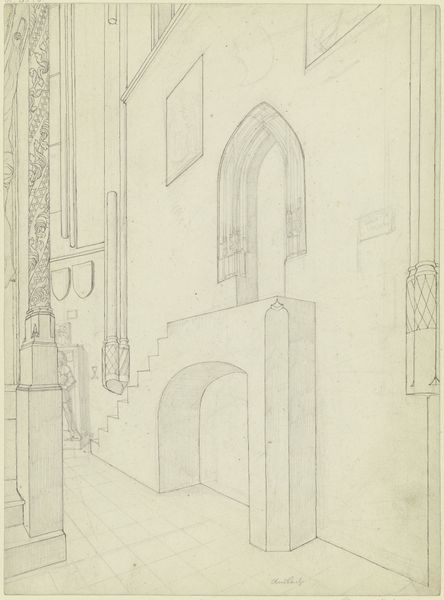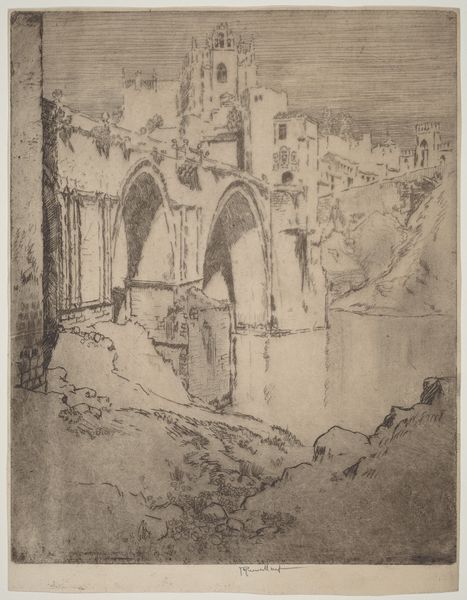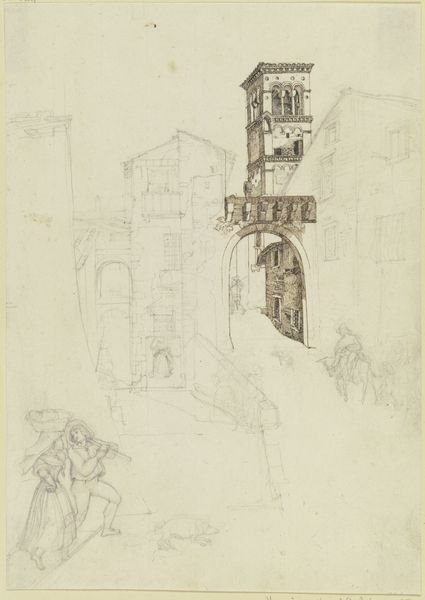
Straße in Rom mit einem Torbogen und dem Kirchturm von Santa Sabina 1817
0:00
0:00
drawing, pencil
#
drawing
#
landscape
#
etching
#
perspective
#
romanesque
#
romanticism
#
pencil
#
cityscape
Copyright: Public Domain
Curator: This evocative pencil drawing is titled "Straße in Rom mit einem Torbogen und dem Kirchturm von Santa Sabina," or "Street in Rome with an Archway and the Bell Tower of Santa Sabina." It was created around 1817 by Carl Philipp Fohr. Editor: My first impression is one of ethereal stillness. It's like looking at a memory, or a half-formed idea sketched lightly onto paper. The pale pencil lines contribute to this fleeting quality. Curator: Indeed. The technique perfectly reflects the Romantic sensibility, seeking emotional resonance over strict realism. Notice how Fohr utilizes the pencil to create varying degrees of texture; a close examination reveals subtle layers, capturing light and shadow as the forms build depth. It emphasizes a sense of atmosphere around a city ripe with historical connotations and religious iconography in its structure. Editor: I'm struck by how Fohr uses linear perspective to draw the eye through the archway, down the street, towards an obscured destination. Semiotically, the archway serves as a powerful threshold; the implied narrative pulls one forward, beyond that opening to new experiences. The structure itself almost looms large with both human hands that forged it as well as those whose passage transformed that very location. Curator: Considering its historical context, Rome was becoming a pilgrimage site for Northern European artists seeking inspiration. This work reveals a dialogue between architectural monumentality and the conditions of laboring bodies moving within and affected by it. How were Roman streets used as stages for religious processions, markets, and political rallies in Fohr’s time, one might wonder? And, how do structures such as this tower signify authority, the dominance of papal power through building materials such as marble and stone? Editor: Absolutely. Moreover, note how the medium of pencil is almost deceptive in how such humble materials are wielded by the artist’s hand. It mimics architecture—line building upon line—transforming ephemeral marks into permanent structures that capture an urban landscape suffused with cultural and social importance. Curator: I see the composition itself now as less about representation and more as an investigation into artistic means to mediate relations between history, power, and everyday existence. It invites viewers to appreciate the conditions that went into both producing this artwork and the very scene it captures, a vibrant crossroads brought to life with pencil markings. Editor: Yes, I now see it less as a singular, static image but, instead, as a complex interplay between the artist, artwork, its setting, and audience mediated across historical moments.
Comments
No comments
Be the first to comment and join the conversation on the ultimate creative platform.
